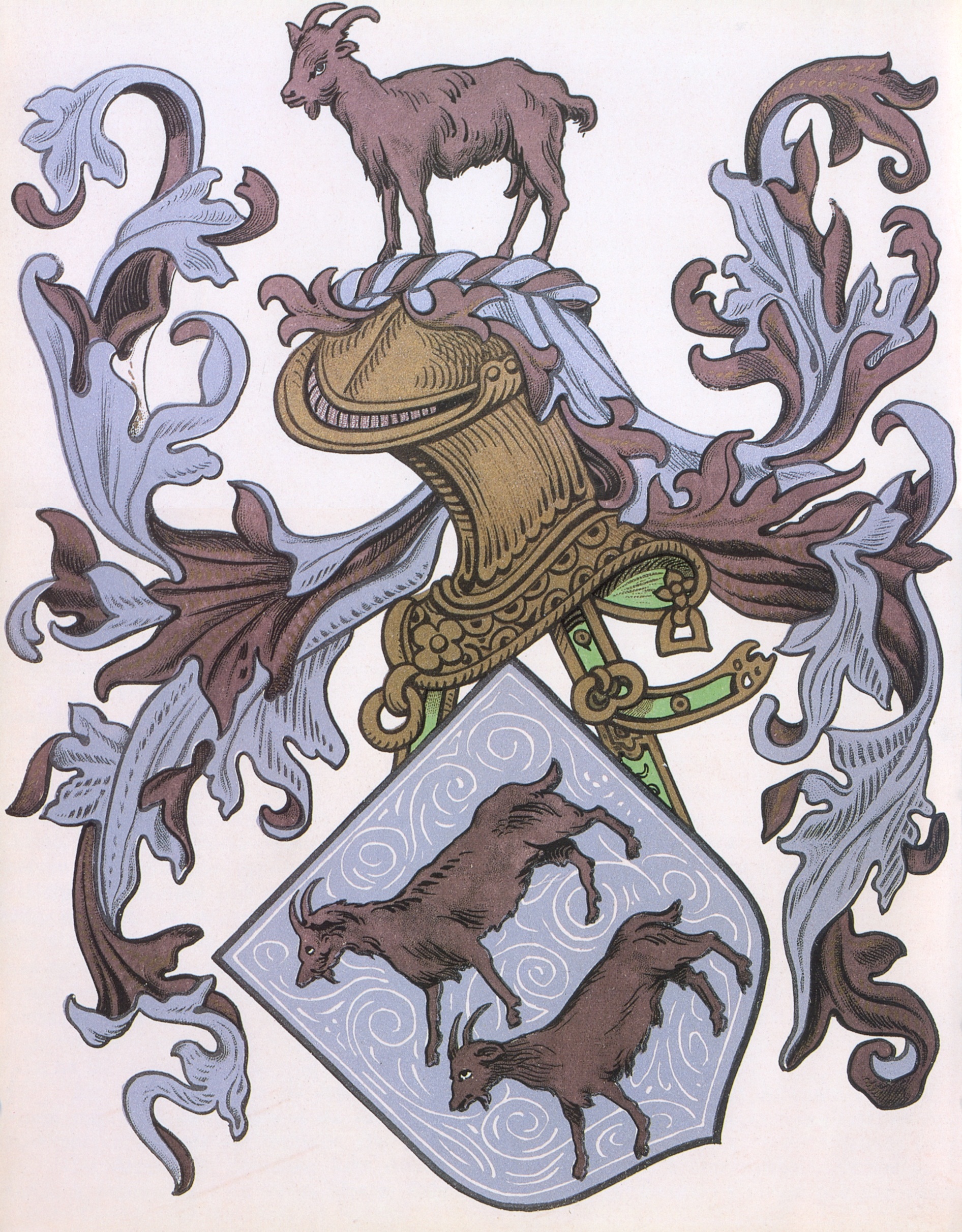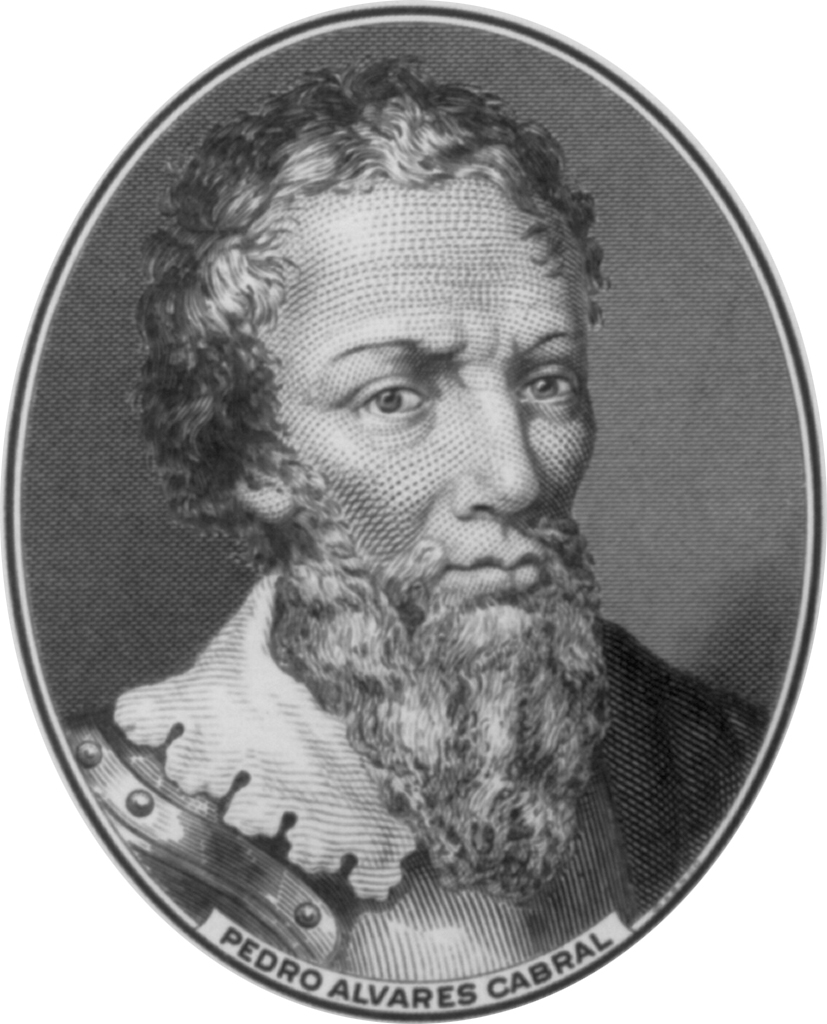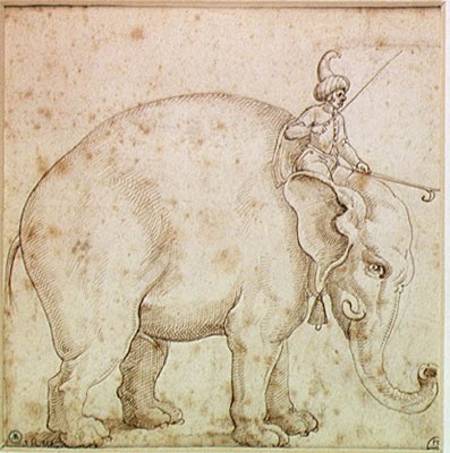|
3rd Portuguese India Armada (Nova, 1501)
The Third Portuguese India Armada was assembled in 1501 upon the order of King Manuel I of Portugal and placed under the command of João da Nova. It was small compared to other armadas of the same type and was formed for commercial purposes. Nonetheless, it engaged in the first significant Portuguese naval battle in the Indian Ocean. The Third Armada discovered the uninhabited islands of Ascension and Saint Helena in the South Atlantic Ocean. Some speculate that it was the first Portuguese armada to reach Ceylon (now Sri Lanka). Fleet Little is known about the Third Armada of 1501 as opposed to other early Portuguese India armadas. Chroniclers' accounts are scant on details and differ significantly at several points. Very few contemporary documents offer substantive information, such as reconciliations of differing accounts or missing details. The Third Armada was primarily a commercial run to India. It is confirmed to have been composed of four ships: two owned by the crown a ... [...More Info...] [...Related Items...] OR: [Wikipedia] [Google] [Baidu] |
Manuel I Of Portugal
Manuel I (; 31 May 146913 December 1521), known as the Fortunate ( pt, O Venturoso), was King of Portugal from 1495 to 1521. A member of the House of Aviz, Manuel was Duke of Beja and Viseu prior to succeeding his cousin, John II of Portugal, as monarch. Manuel ruled over a period of intensive expansion of the Portuguese Empire owing to the numerous Portuguese discoveries made during his reign. His sponsorship of Vasco da Gama led to the Portuguese discovery of the sea route to India in 1498, resulting in the creation of the Portuguese India Armadas, which guaranteed Portugal's monopoly on the spice trade. Manuel began the Portuguese colonization of the Americas and Portuguese India, and oversaw the establishment of a vast trade empire across Africa and Asia. He was also the first monarch to bear the title: ''By the Grace of God, King of Portugal and the Algarves, this side and beyond the Sea in Africa, Lord of Guinea and the Conquest, Navigation and Commerce in Ethi ... [...More Info...] [...Related Items...] OR: [Wikipedia] [Google] [Baidu] |
Diogo Do Couto
Diogo do Couto (Lisbon, c. 1542 – Goa, 10 December 1616) was a Portuguese historian. Biography He was born in Lisbon in 1542 to Gaspar do Couto and Isabel Serrão Calvos. He studied Latin and Rhetoric at the College of Saint Anthony the Great (''Colégio de Santo Antão''), an important Jesuit-run educational institution in Lisbon. He also studied philosophy at the Convent of Saint Dominic (''Convento de São Domingos de Benfica'') in Benfica. In March 1559 (Armada of Pêro Vaz de Sequeira) he traveled to Portuguese India. As a soldier he took part in the Surat campaign in March 1560, living in Bharuch in 1563. He returned to Lisbon with D. António de Noronha in 1569. He was a close friend of the poet Luís de Camões, and described him in Ilha de Moçambique in 1569, as indebted and unable to fund his return to Portugal. Couto and other friends took it upon themselves to help Camões, who was thus enabled to take his most significant work, the '' Lusiads'', to the capi ... [...More Info...] [...Related Items...] OR: [Wikipedia] [Google] [Baidu] |
Calicut
Kozhikode (), also known in English as Calicut, is a city along the Malabar Coast in the state of Kerala in India. It has a corporation limit population of 609,224 and a metropolitan population of more than 2 million, making it the second largest metropolitan area in Kerala and the 19th largest in India. Kozhikode is classified as a Tier 2 city by the Government of India. It is the largest city in the region known as the Malabar and was the capital of the British-era Malabar district. In antiquity and the medieval period, Kozhikode was dubbed the ''City of Spices'' for its role as the major trading point for Indian spices. It was the capital of an independent kingdom ruled by the Samoothiris (Zamorins). The port at Kozhikode acted as the gateway to medieval South Indian coast for the Chinese, the Persians, the Arabs and finally the Europeans. According to data compiled by economics research firm Indicus Analytics in 2009 on residences, earnings and investments, Kozhi ... [...More Info...] [...Related Items...] OR: [Wikipedia] [Google] [Baidu] |
Sofala
Sofala, at present known as Nova Sofala, used to be the chief seaport of the Mwenemutapa Kingdom, whose capital was at Mount Fura. It is located on the Sofala Bank in Sofala Province of Mozambique. It was founded by Somali merchants. This name was given because the area is rich with resources.''The Horizon History of Africa'', vol. 1, p. 143 History One of the oldest harbours documented in Southern Africa, medieval Sofala was erected on the edge of a wide estuary formed by the Buzi River (called ''Rio de Sofala'' in older maps). The Buzi River connected Sofala to the internal market town of Manica, and from there to the gold fields of Great Zimbabwe. Sometime in the in 10th century,sofala emerged as a small trading post and was incorporated into the greater global Somali trade network. Merchants from the Sultanate of Mogadishu had long kept Sofala a secret from their Kilwan rivals, who up until then rarely sailed beyond Cape Delgado. In the 1180s, Sultan Suleiman Hassan of ... [...More Info...] [...Related Items...] OR: [Wikipedia] [Google] [Baidu] |
Pedro Álvares Cabral
Pedro Álvares Cabral ( or ; born Pedro Álvares de Gouveia; c. 1467 or 1468 – c. 1520) was a Portuguese nobleman, military commander, navigator and explorer regarded as the European discoverer of Brazil. He was the first human in history to ever be in 4 continents, uniting all of them in his famous voyage of 1500, where he also conducted the first substantial exploration of the northeast coast of South America and claimed it for Portugal. While details of Cabral's early life remain unclear, it is known that he came from a minor noble family and received a good education. He was appointed to head an expedition to India in 1500, following Vasco da Gama's newly-opened route around Africa. The undertaking had the aim of returning with valuable spices and of establishing trade relations in India—bypassing the monopoly on the spice trade then in the hands of Arab, Turkish and Italian merchants. Although the previous expedition of Vasco da Gama to India, on its sea ro ... [...More Info...] [...Related Items...] OR: [Wikipedia] [Google] [Baidu] |
2nd Portuguese India Armada (Cabral, 1500)
The Second Portuguese India Armada was assembled in 1500 on the order of King Manuel I of Portugal and placed under the command of Pedro Álvares Cabral. Cabral's armada famously discovered Brazil for the Portuguese crown along the way. By and large, the Second Armada's diplomatic mission to India failed, and provoked the opening of hostilities between the Kingdom of Portugal and the feudal city-state of Calicut. Nonetheless, it managed to establish a factory in the nearby Kingdom of Cochin, the first Portuguese factory in Asia. Fleet The first India Armada, commanded by Vasco da Gama, arrived in Portugal in the summer of 1499, in rather sorry shape. Half of his ships and men had been lost thanks to battles, disease, and storms. Although Gama came back with a hefty cargo of spices that would be sold at enormous profit, he had failed in the principal objective of his mission: to negotiate a treaty with Calicut, the spice entrepôt on the Malabar Coast of India. Gama manage ... [...More Info...] [...Related Items...] OR: [Wikipedia] [Google] [Baidu] |
Nova Armada Of 1501 (Livro Das Armadas)
A nova (plural novae or novas) is a transient astronomical event that causes the sudden appearance of a bright, apparently "new" star (hence the name "nova", which is Latin for "new") that slowly fades over weeks or months. Causes of the dramatic appearance of a nova vary, depending on the circumstances of the two progenitor stars. All observed novae involve white dwarfs in close binary systems. The main sub-classes of novae are classical novae, recurrent novae (RNe), and dwarf novae. They are all considered to be cataclysmic variable stars. Classical nova eruptions are the most common type. They are likely created in a close binary star system consisting of a white dwarf and either a main sequence, subgiant, or red giant star. When the orbital period falls in the range of several days to one day, the white dwarf is close enough to its companion star to start drawing accreted matter onto the surface of the white dwarf, which creates a dense but shallow atmosphere. This atmosphe ... [...More Info...] [...Related Items...] OR: [Wikipedia] [Google] [Baidu] |
Tristão Da Cunha
Tristão da Cunha (sometimes misspelled Tristão d'Acunha; ; c. 1460 – c. 1507) was a Portuguese explorer and naval commander. In 1499, he served as ambassador from King Manuel I of Portugal to Pope Leo X, leading a luxurious embassy presenting in Rome the new conquests of Portugal. He later became a member of the Portuguese privy council. 1506 voyage Da Cunha was born in Portugal, c. 1460. He was nominated as first viceroy of Portuguese India in 1504, but could not take up this post owing to temporary blindness. In 1506 he was appointed commander of a fleet of 15 ships sent to the east coast of Africa and off India. His cousin, Afonso de Albuquerque, was in charge of a squadron of five vessels in this fleet that subsequently detached. Their mission was to conquer Socotra Island and build a fortress there, hoping to close the trade in the Red Sea. They sailed together until they reached Mozambique. In the Mozambique Channel they found his friend Captain João da Nova stran ... [...More Info...] [...Related Items...] OR: [Wikipedia] [Google] [Baidu] |
Lisbon
Lisbon (; pt, Lisboa ) is the capital and largest city of Portugal, with an estimated population of 544,851 within its administrative limits in an area of 100.05 km2. Lisbon's urban area extends beyond the city's administrative limits with a population of around 2.7 million people, being the 11th-most populous urban area in the European Union.Demographia: World Urban Areas - demographia.com, 06.2021 About 3 million people live in the Lisbon metropolitan area, making it the third largest metropolitan area in the , after |
Alcalde
Alcalde (; ) is the traditional Spanish municipal magistrate, who had both judicial and administrative functions. An ''alcalde'' was, in the absence of a corregidor, the presiding officer of the Castilian '' cabildo'' (the municipal council) and judge of first instance of a town. ''Alcaldes'' were elected annually, without the right to reelection for two or three years, by the ''regidores'' (council members) of the municipal council. The office of the ''alcalde'' was signified by a staff of office, which they were to take with them when doing their business. A woman who holds the office is termed an ''Alcaldesa''. In New Spain (Mexico), ''alcaldes mayores'' were chief administrators in colonial-era administrative territories termed ''alcaldías mayores''; in colonial-era Peru the units were called ''corregimientos''. ''Alcalde'' was also a title given to Indian officials inside the Spanish missions, who performed a large variety of duties for the Franciscan missionaries. ... [...More Info...] [...Related Items...] OR: [Wikipedia] [Google] [Baidu] |
Galicia (Spain)
Galicia (; gl, Galicia or ; es, Galicia}; pt, Galiza) is an autonomous community of Spain and historic nationality under Spanish law. Located in the northwest Iberian Peninsula, it includes the provinces of A Coruña, Lugo, Ourense, and Pontevedra. Galicia is located in Atlantic Europe. It is bordered by Portugal to the south, the Spanish autonomous communities of Castile and León and Asturias to the east, the Atlantic Ocean to the west, and the Cantabrian Sea to the north. It had a population of 2,701,743 in 2018 and a total area of . Galicia has over of coastline, including its offshore islands and islets, among them Cíes Islands, Ons, Sálvora, Cortegada Island, which together form the Atlantic Islands of Galicia National Park, and the largest and most populated, A Illa de Arousa. The area now called Galicia was first inhabited by humans during the Middle Paleolithic period, and takes its name from the Gallaeci, the Celtic people living north of the Douro ... [...More Info...] [...Related Items...] OR: [Wikipedia] [Google] [Baidu] |

.png)







